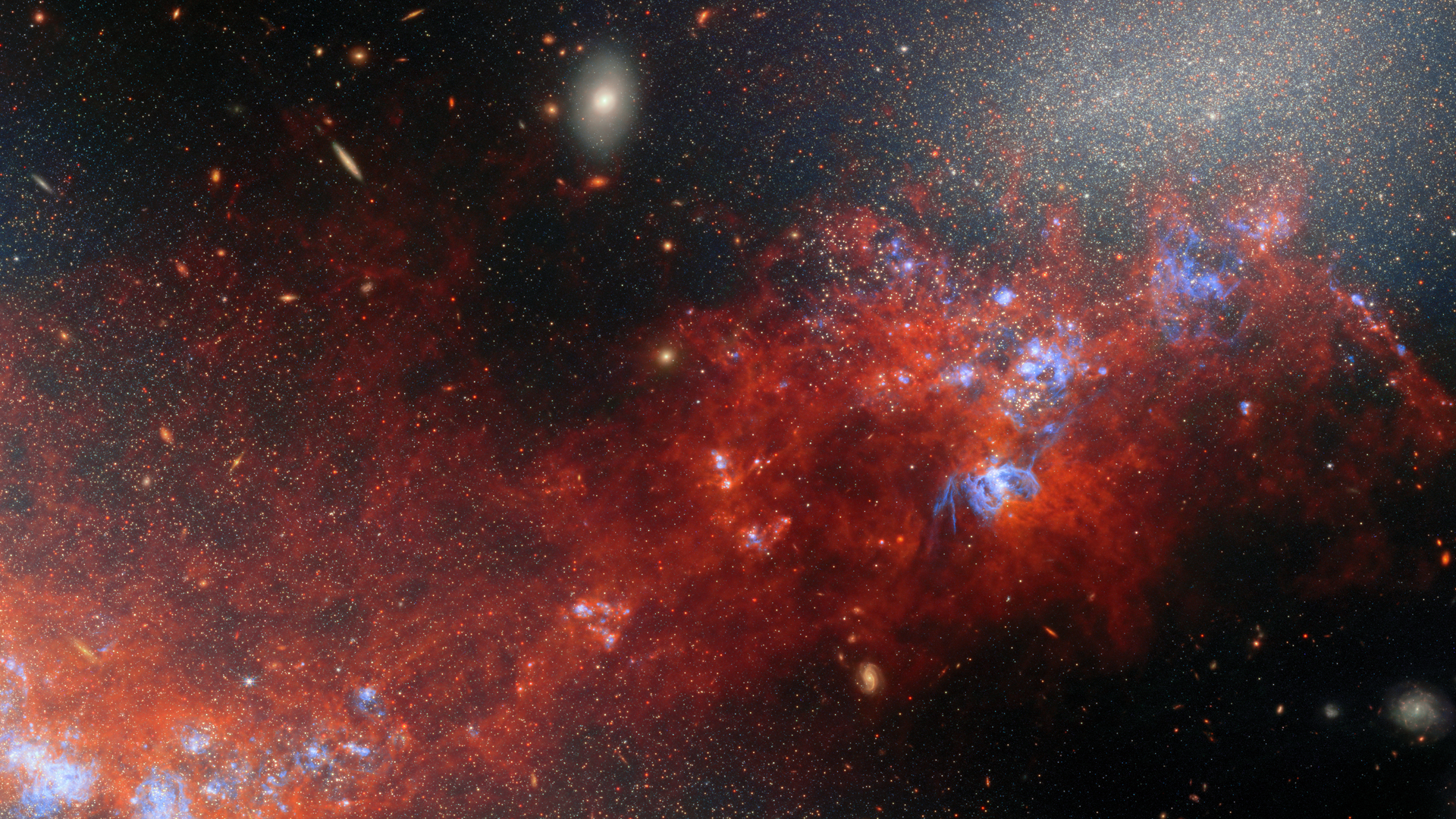NASA chief Bill Nelson condemns Russian anti-satellite test
"I'm outraged by this irresponsible and destabilizing action," he said.

NASA Administrator Bill Nelson has condemned a Russian anti-satellite test on Monday (Nov. 15) that put the International Space Station at risk of colliding with the resulting debris.
Shortly before 2 a.m. EST (0700 GMT) on Monday morning, flight controllers woke up the seven-person crew of the ISS and instructed them to take shelter in their return ships as the orbiting lab passed through a field of orbital debris, or space junk, which apparently resulted from a direct-ascent anti-satellite (DA-ASAT) missile colliding with a defunct Russian satellite.
"Earlier today, due to the debris generated by the destructive Russian Anti-Satellite (ASAT) test, ISS astronauts and cosmonauts undertook emergency procedures for safety," Nelson said in a NASA statement. "I'm outraged by this irresponsible and destabilizing action. With its long and storied history in human spaceflight, it is unthinkable that Russia would endanger not only the American and international partner astronauts on the ISS, but also their own cosmonauts."
Related: Russian anti-satellite test a 'dangerous and irresponsible' act that threatens astronauts, US says
"Their actions are reckless and dangerous, threatening as well the Chinese space station and the taikonauts on board," Nelson added.
In addition to the seven people currently living and working at the International Space Station — two Russian cosmonauts, three NASA astronauts, one European Space Agency (ESA) astronaut and one Japan Aerospace Exploration Agency (JAXA) astronaut — there are three crewmembers on board China's Tiangong space station.
The anti-satellite test created more than 1,500 pieces of trackable space debris and hundreds of thousands of smaller, undetectable pieces of debris in low Earth orbit, U.S. Department of State spokesperson Ned Price said Monday during a news conference.
Breaking space news, the latest updates on rocket launches, skywatching events and more!
That debris not only threatens the safety of space station crews, but it could also damage or destroy satellites in Earth orbit in the event of a collision
— thereby increasing the amount of space junk that satellites and other space missions will need to avoid in the future.
"All nations have a responsibility to prevent the purposeful creation of space debris from ASATs and to foster a safe, sustainable space environment," Nelson said. "NASA will continue monitoring the debris in the coming days and beyond to ensure the safety of our crew in orbit."
Email Hanneke Weitering at hweitering@space.com or follow her @hannekescience. Follow us on Twitter @Spacedotcom and on Facebook.

Hanneke Weitering is a multimedia journalist in the Pacific Northwest reporting on the future of aviation at FutureFlight.aero and Aviation International News and was previously the Editor for Spaceflight and Astronomy news here at Space.com. As an editor with over 10 years of experience in science journalism she has previously written for Scholastic Classroom Magazines, MedPage Today and The Joint Institute for Computational Sciences at Oak Ridge National Laboratory. After studying physics at the University of Tennessee in her hometown of Knoxville, she earned her graduate degree in Science, Health and Environmental Reporting (SHERP) from New York University. Hanneke joined the Space.com team in 2016 as a staff writer and producer, covering topics including spaceflight and astronomy. She currently lives in Seattle, home of the Space Needle, with her cat and two snakes. In her spare time, Hanneke enjoys exploring the Rocky Mountains, basking in nature and looking for dark skies to gaze at the cosmos.
